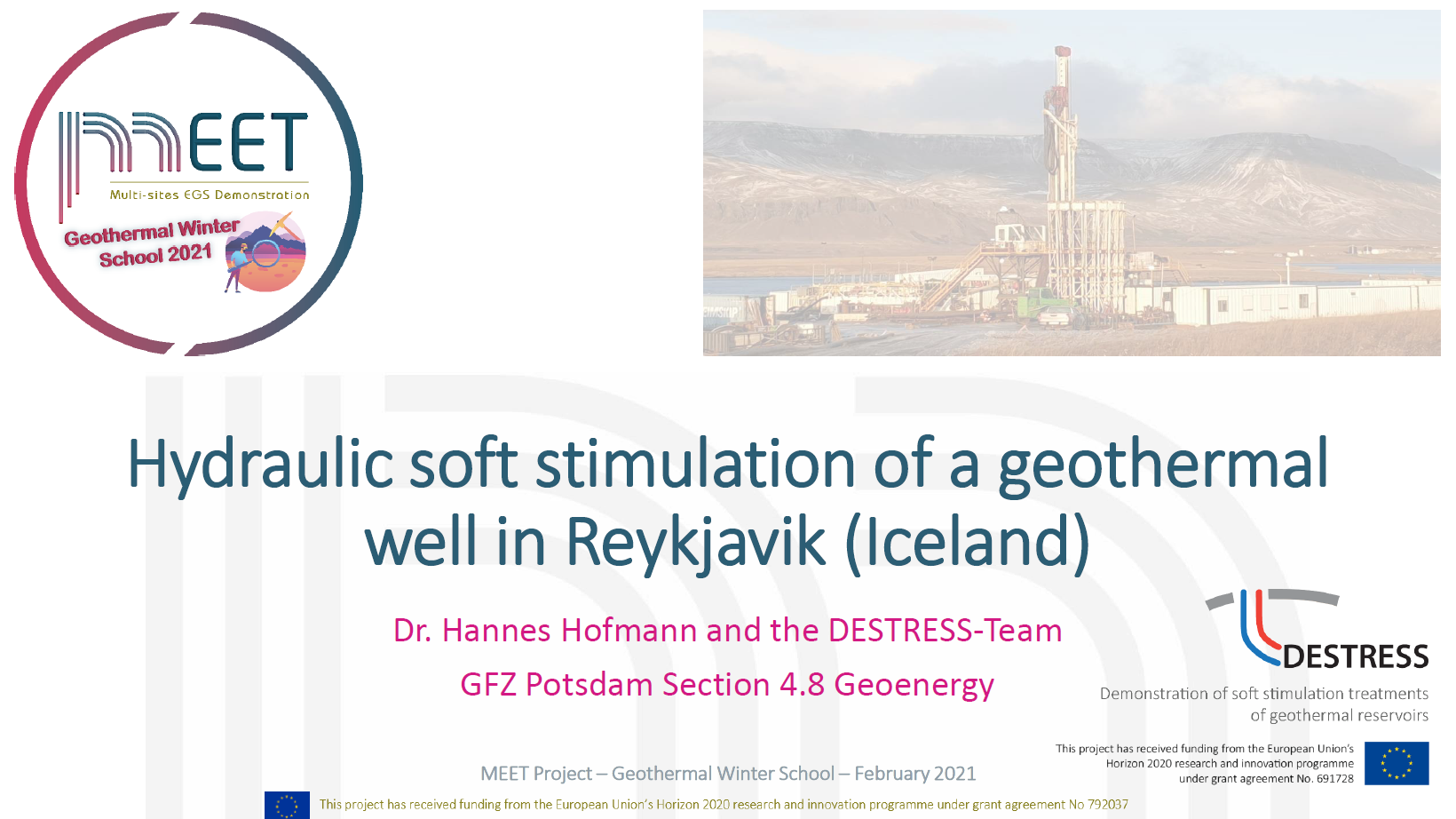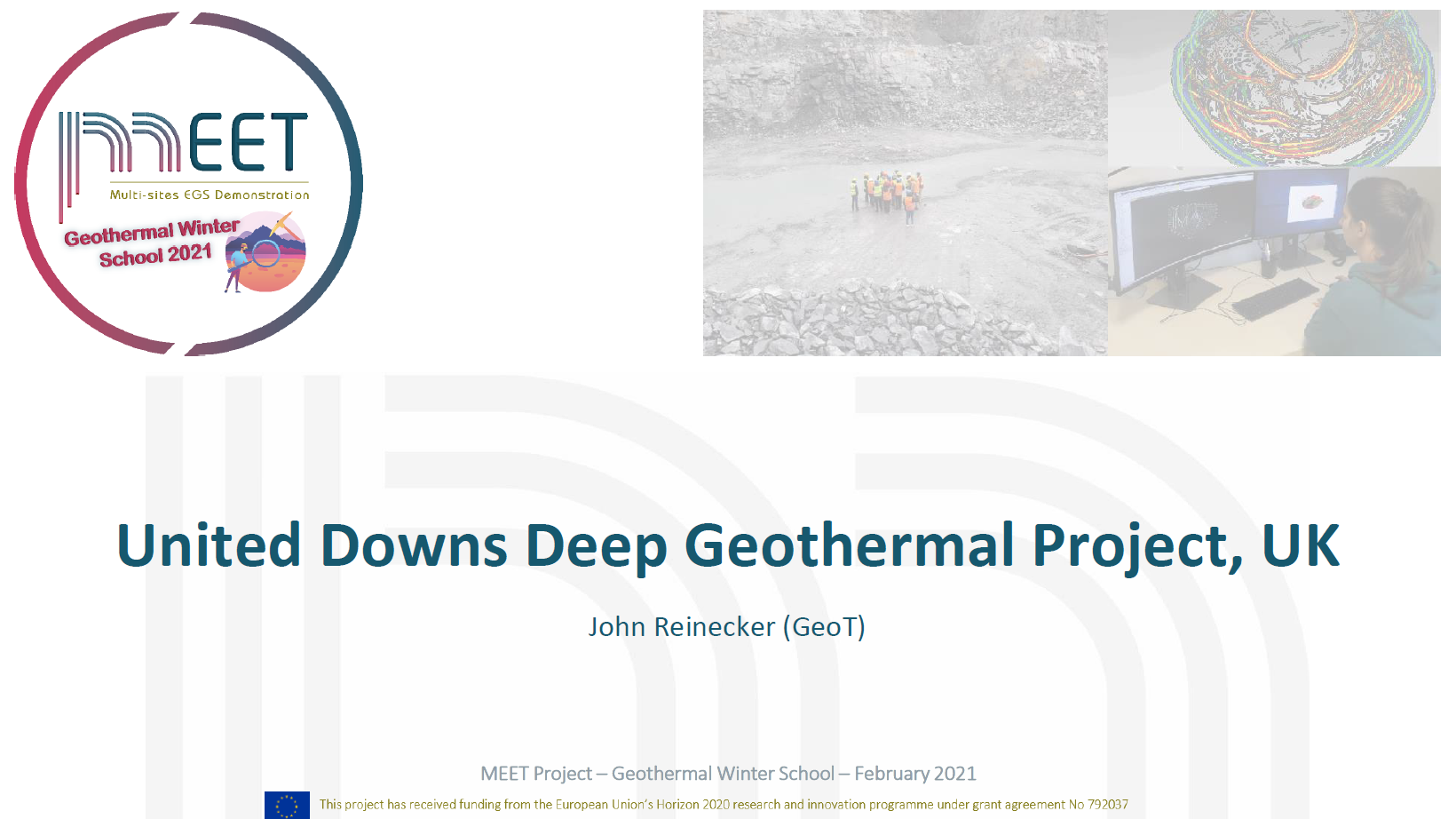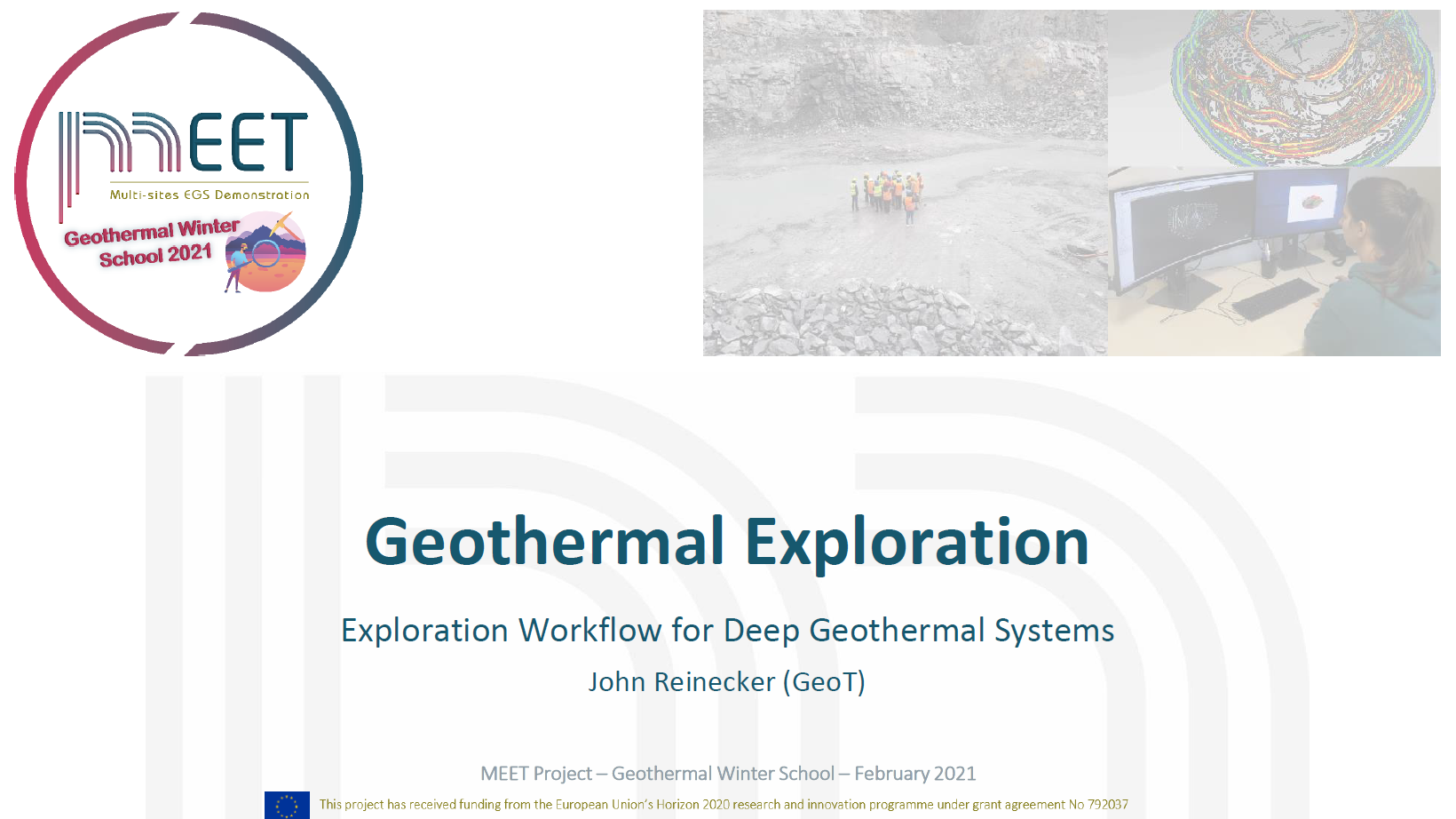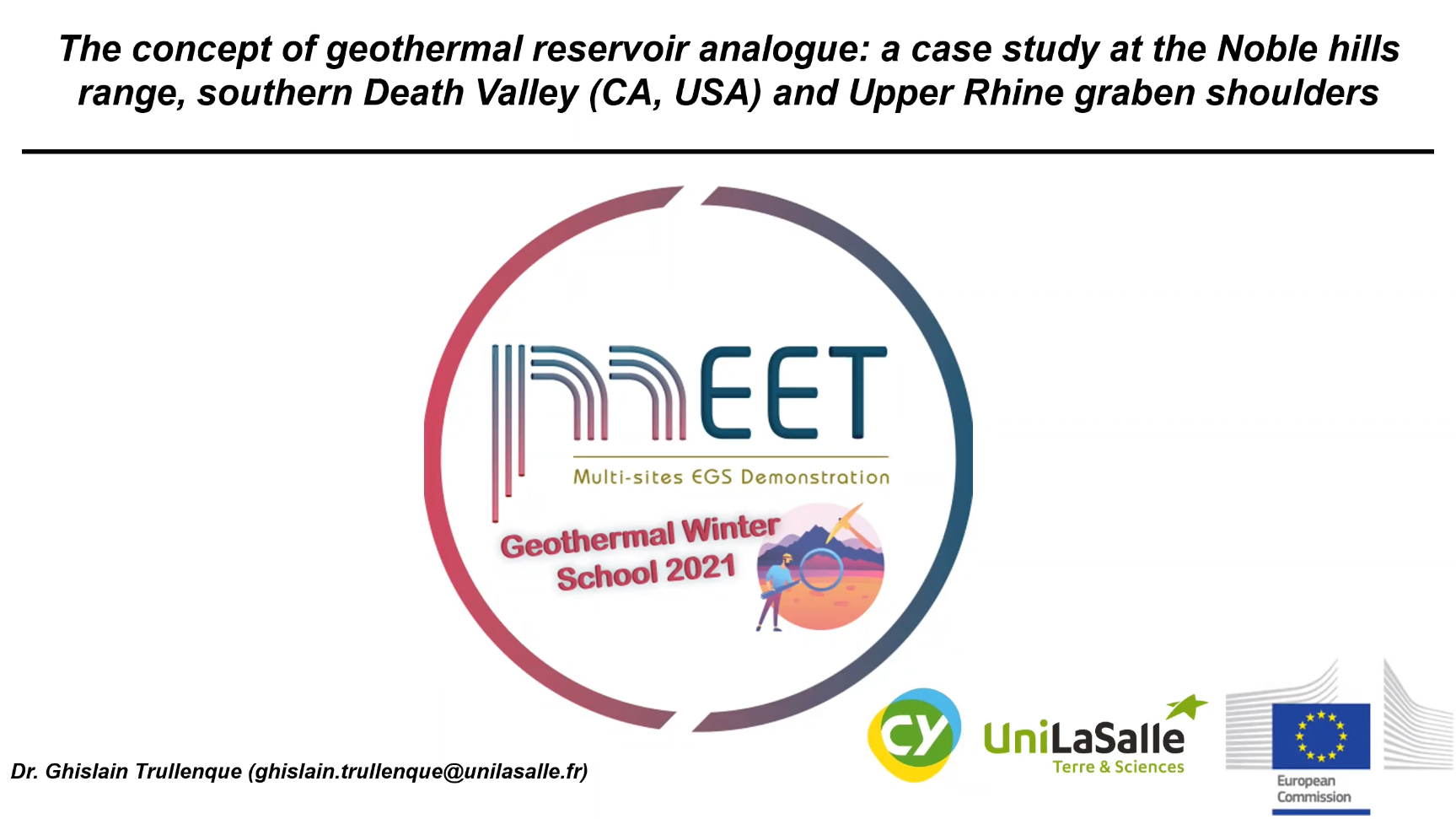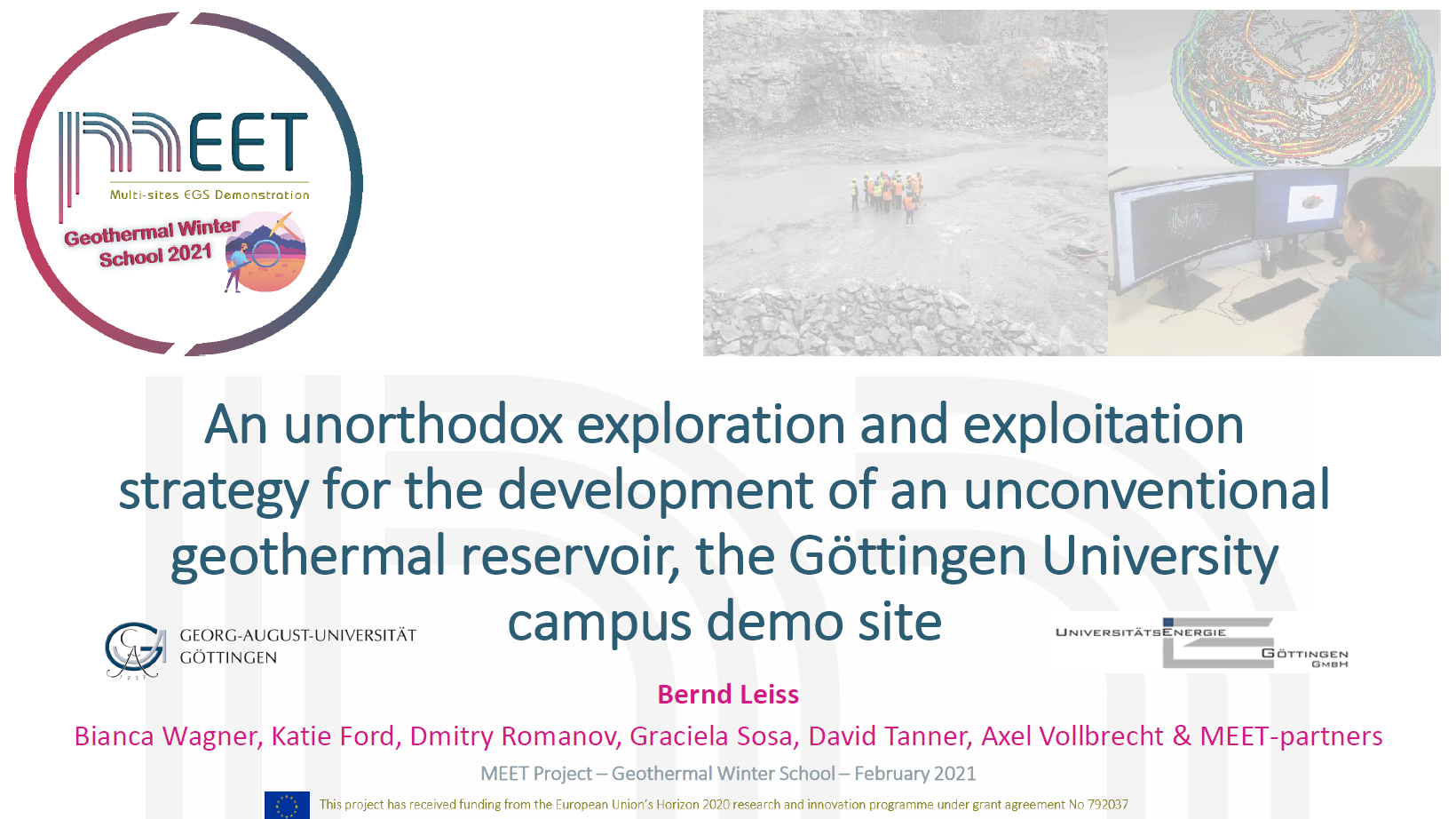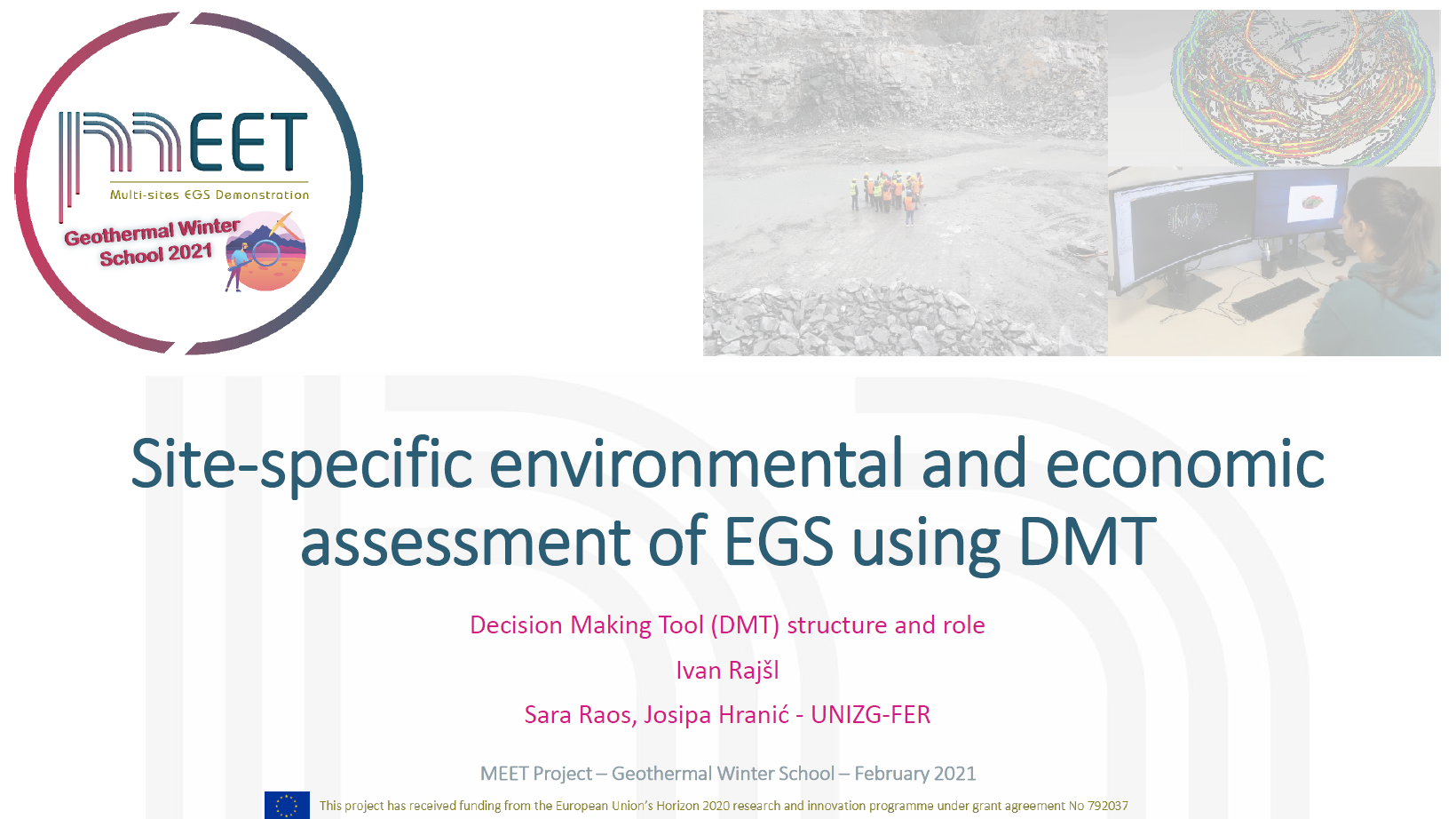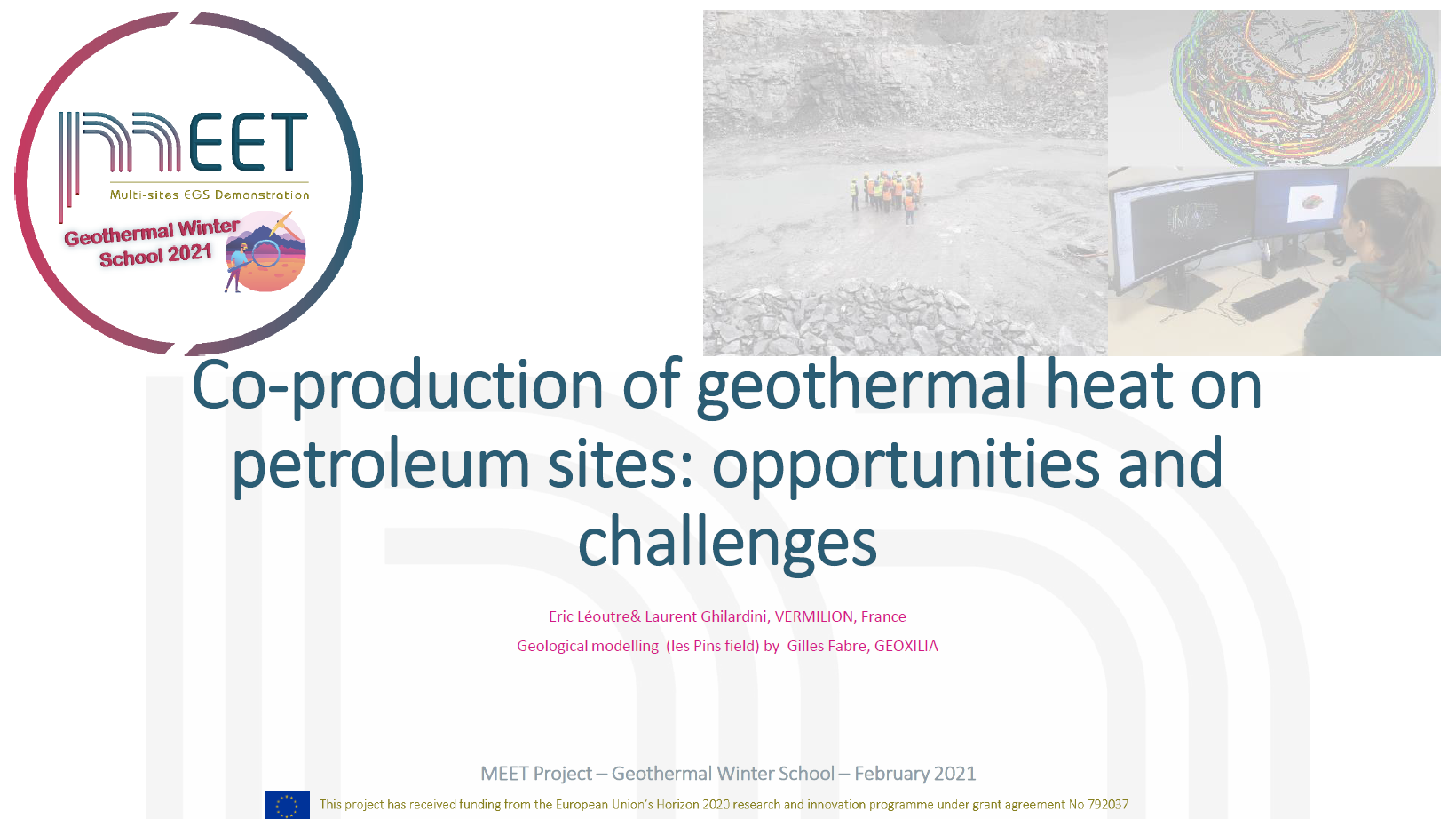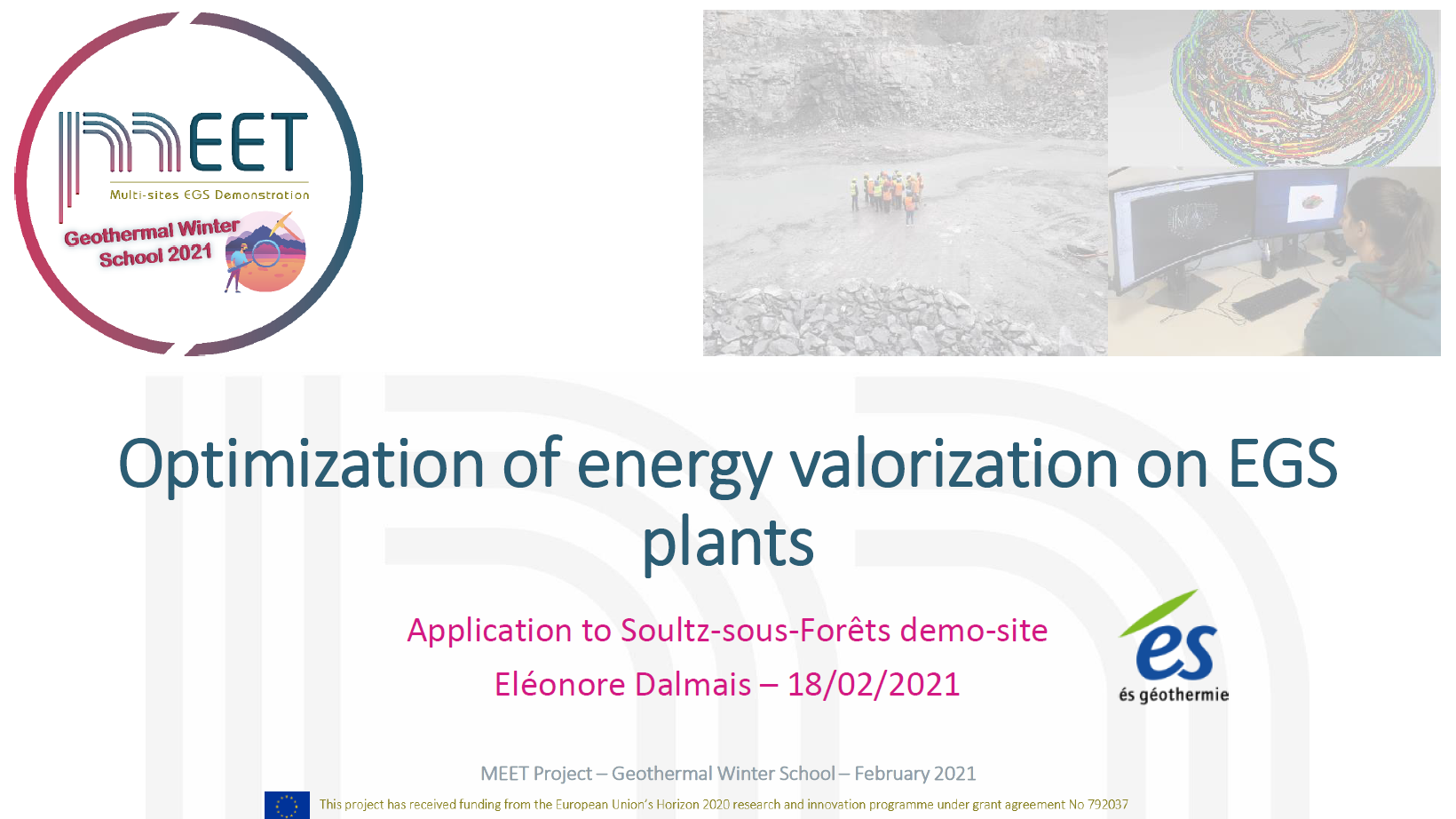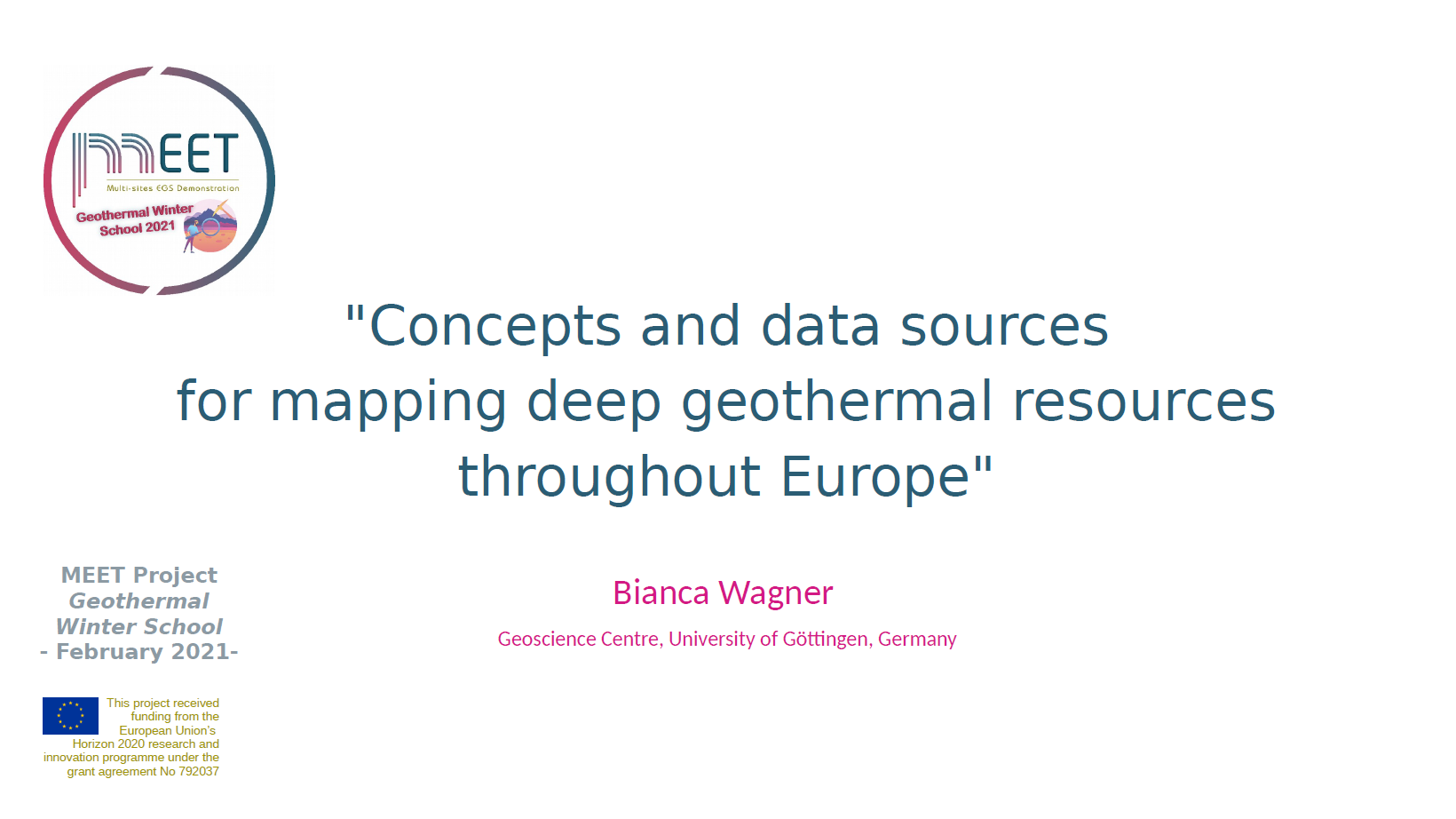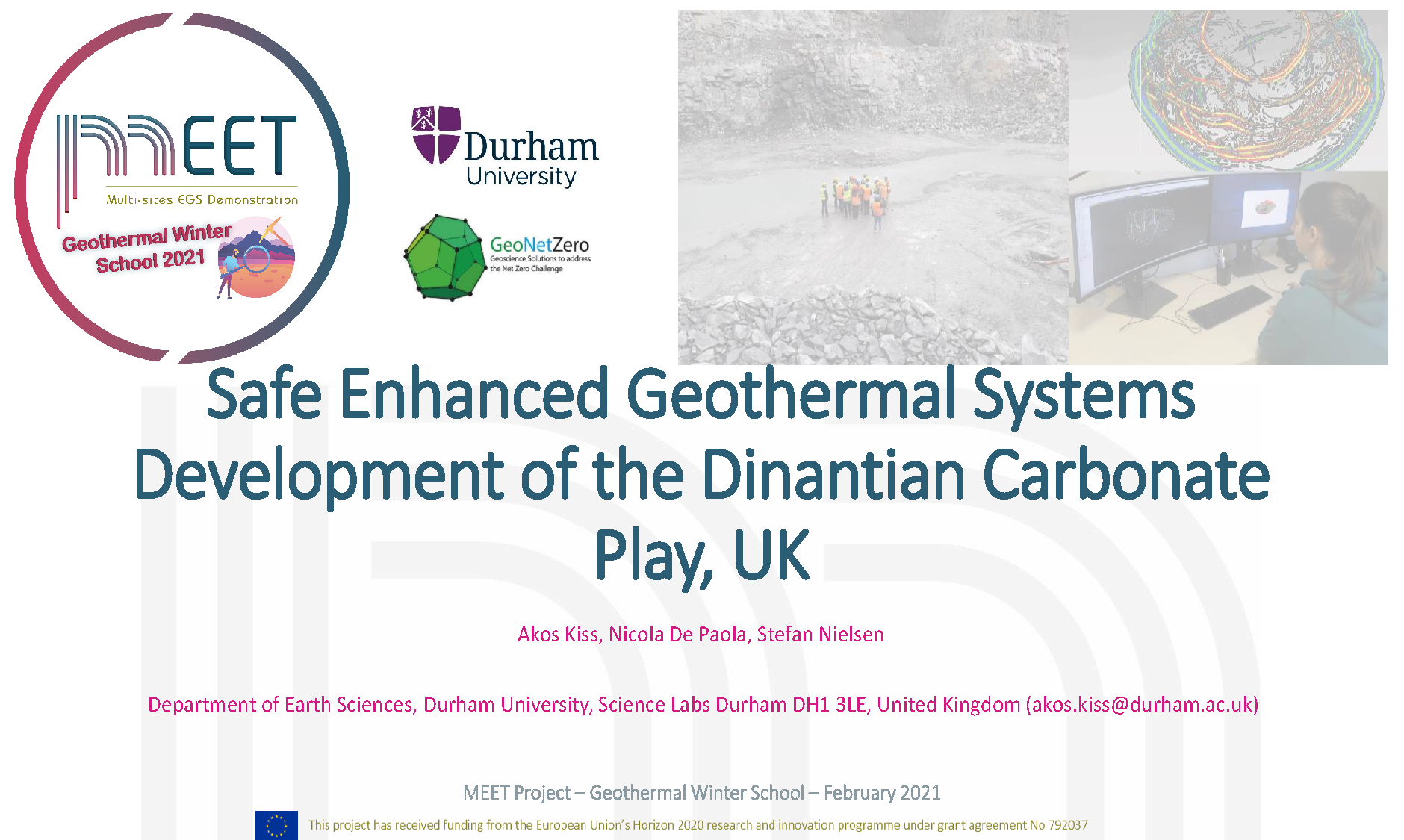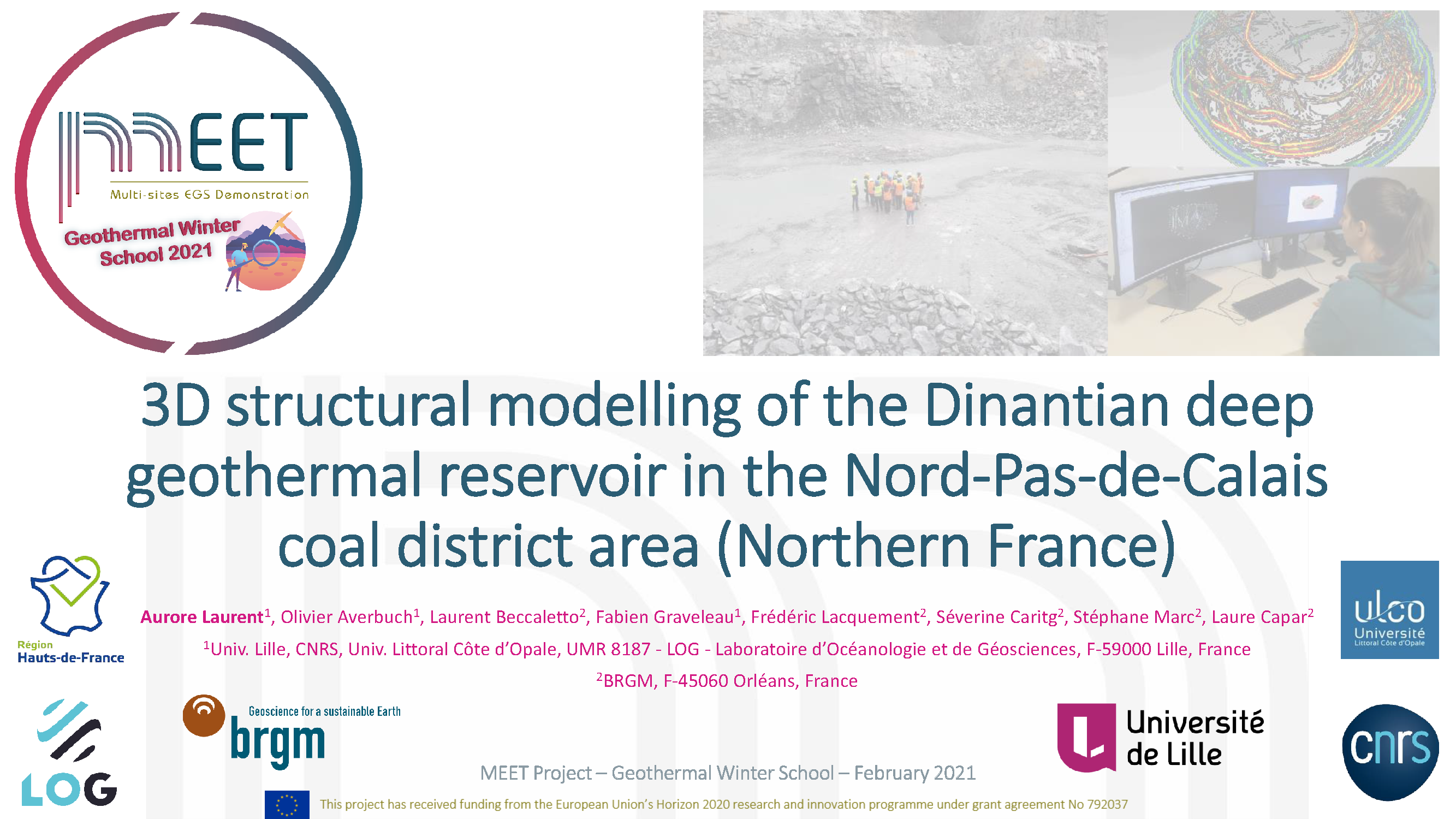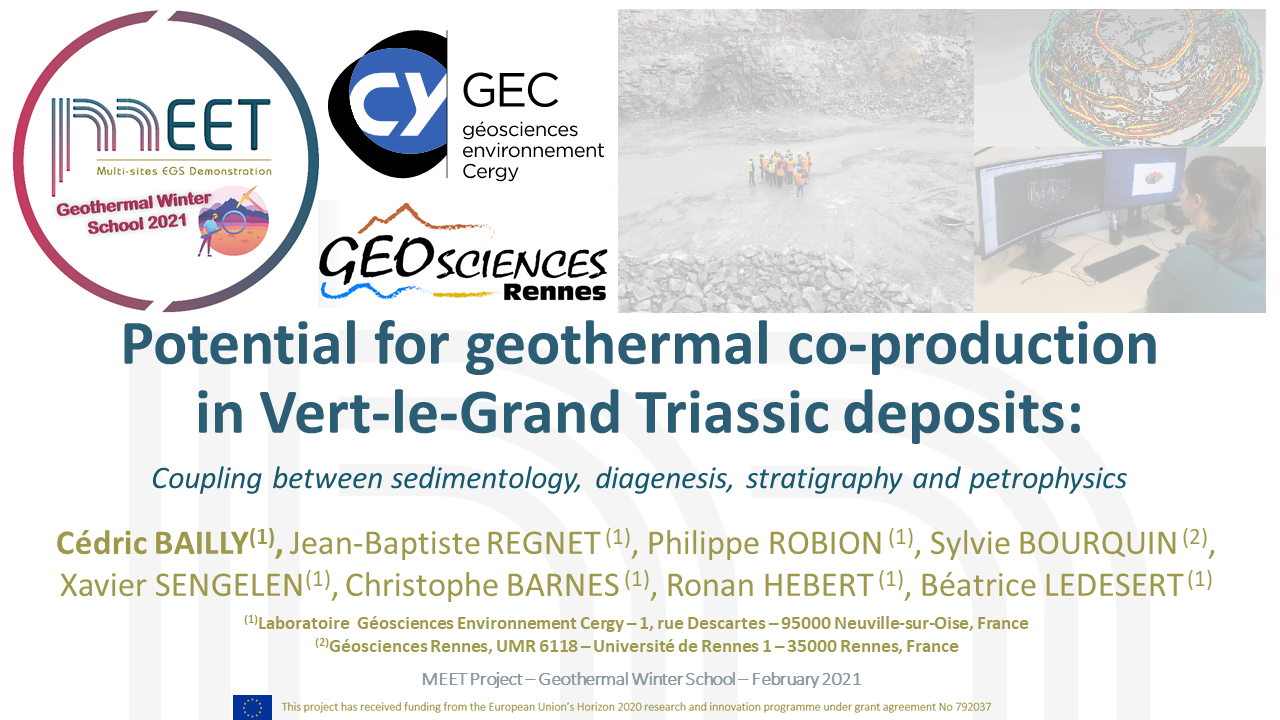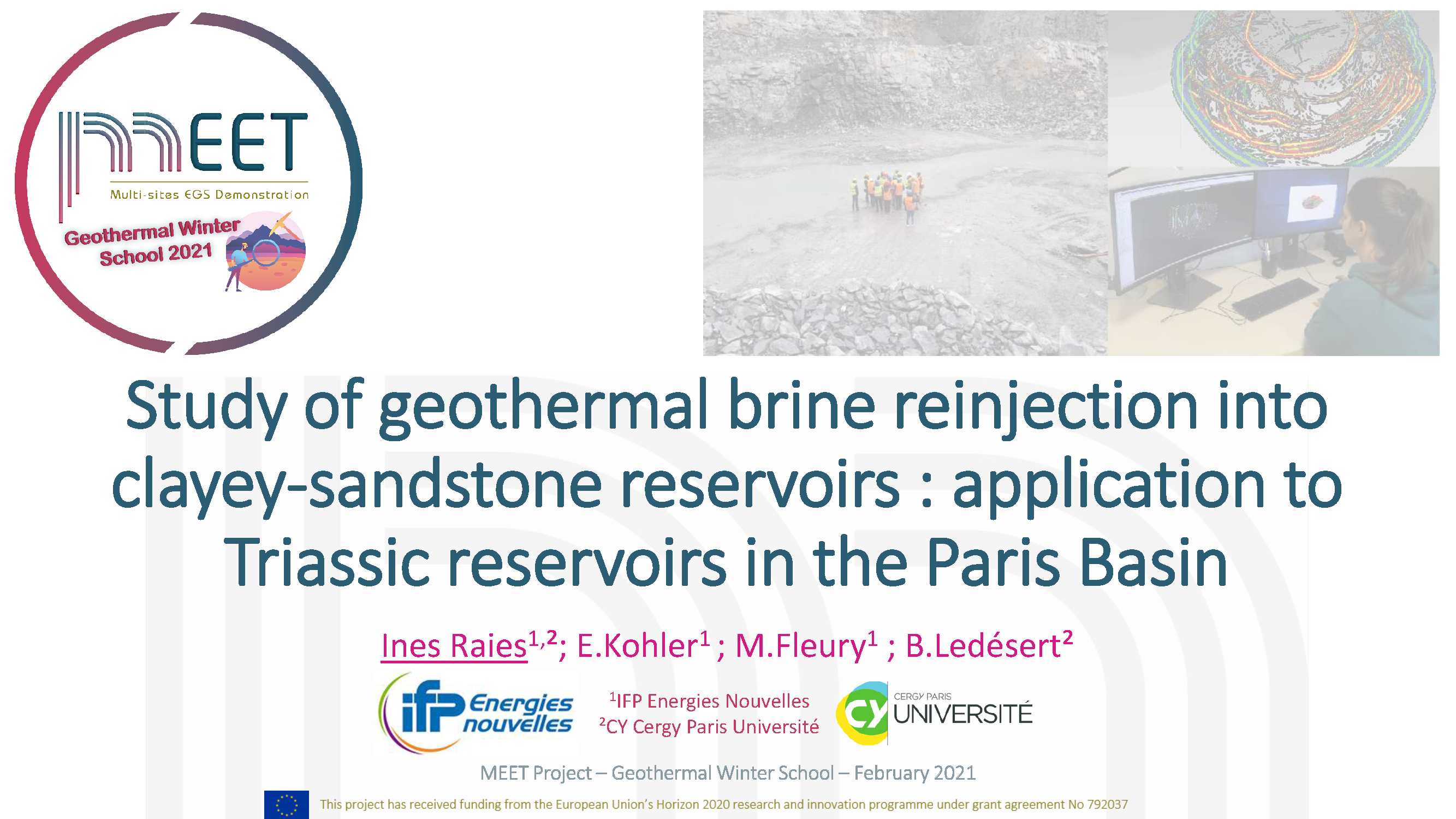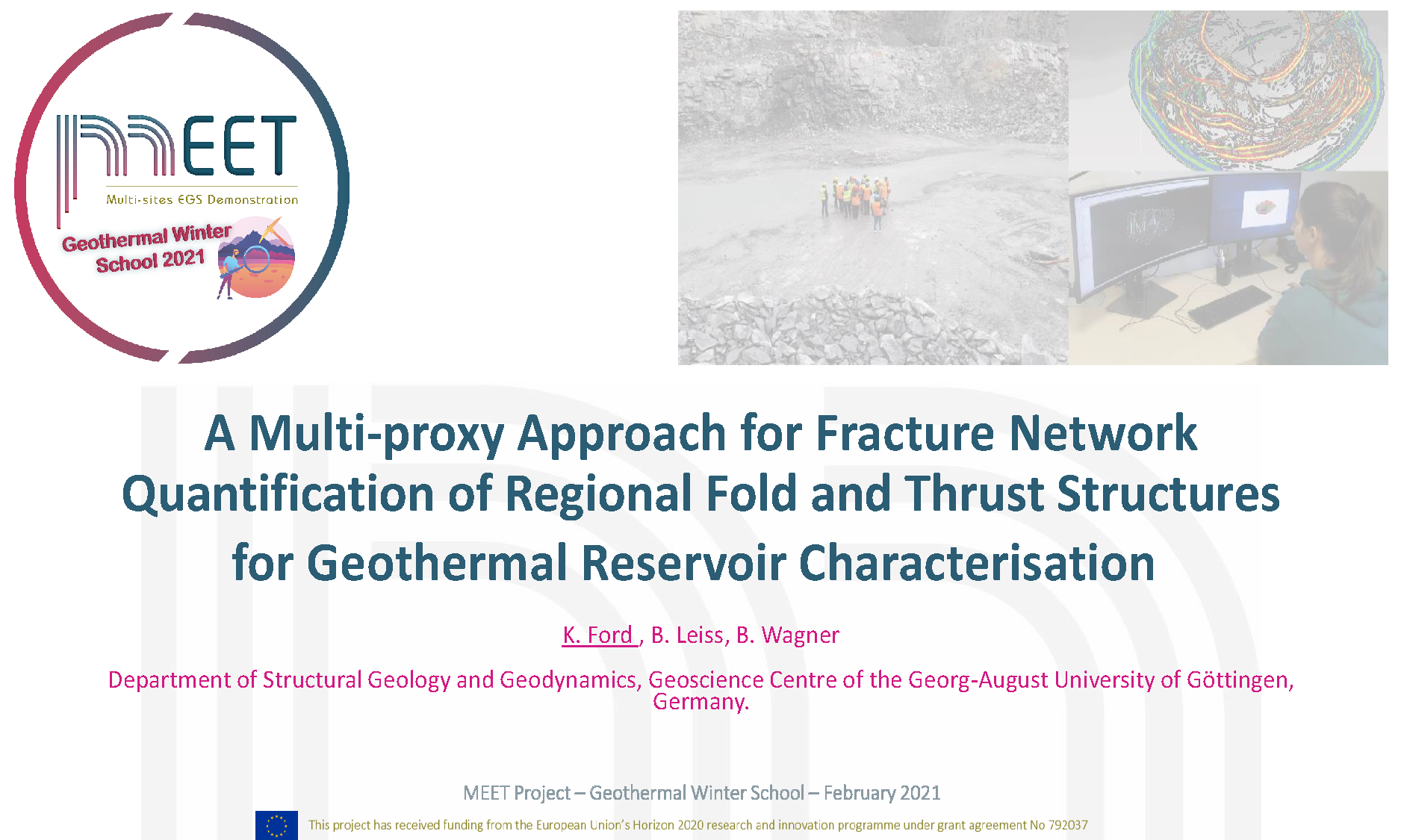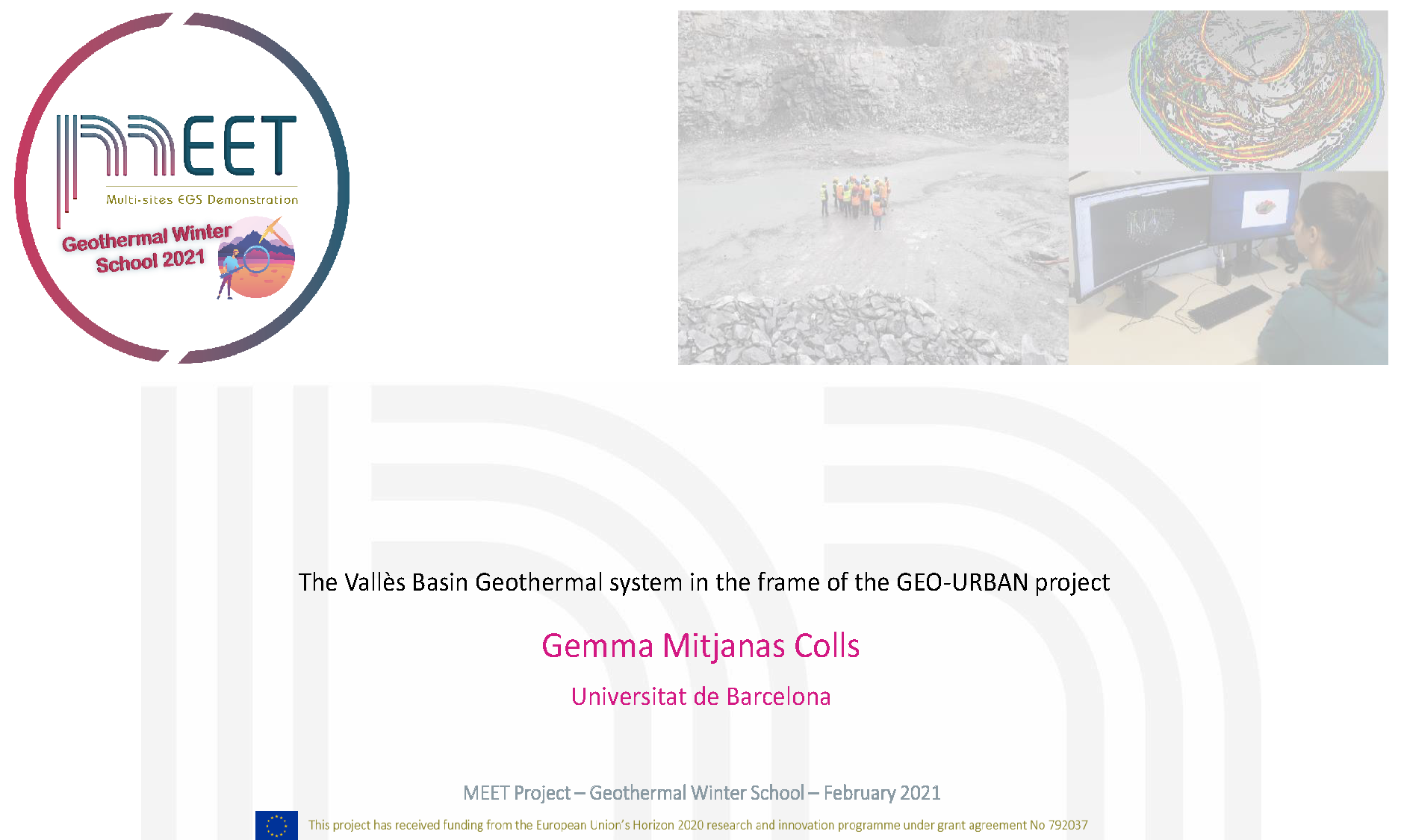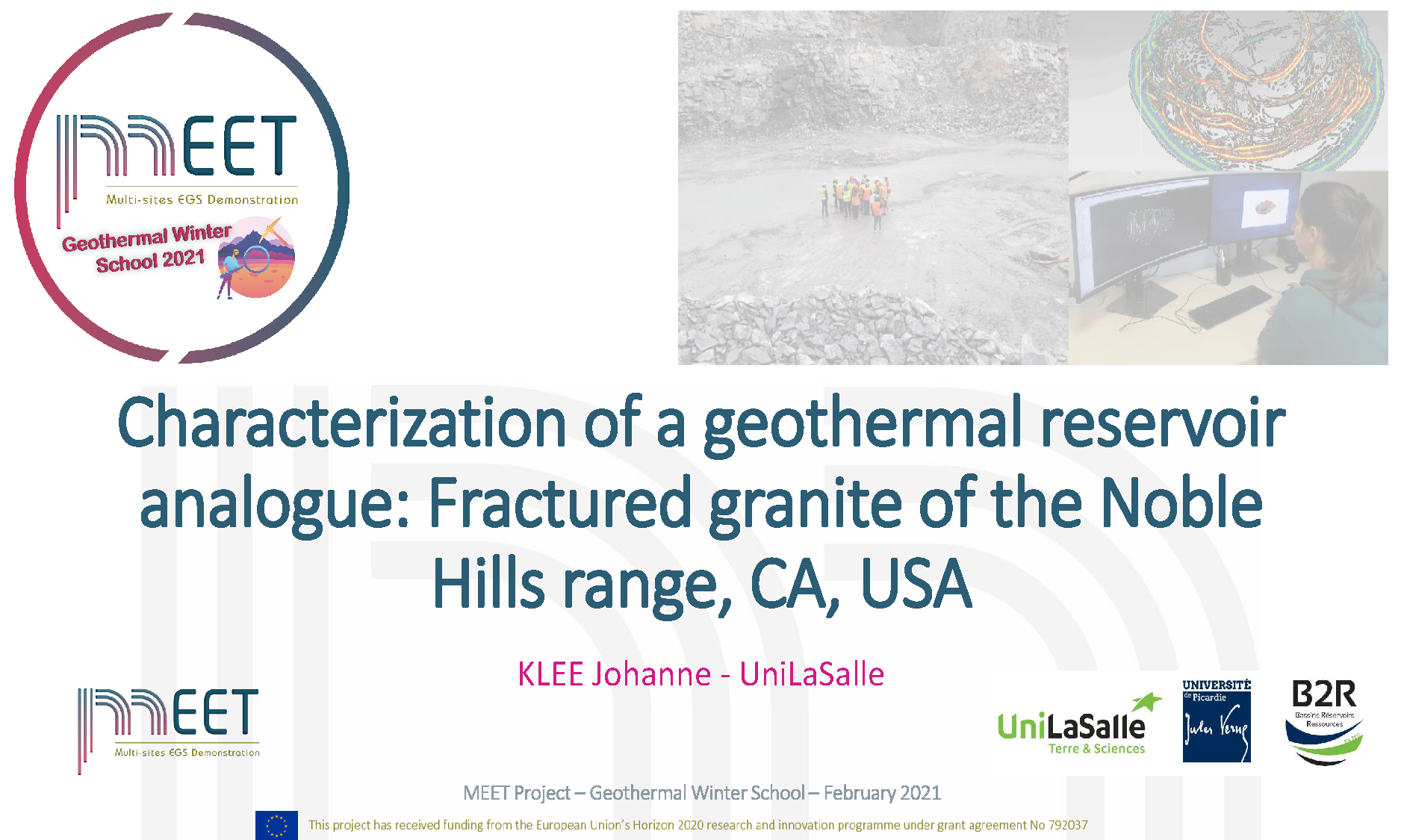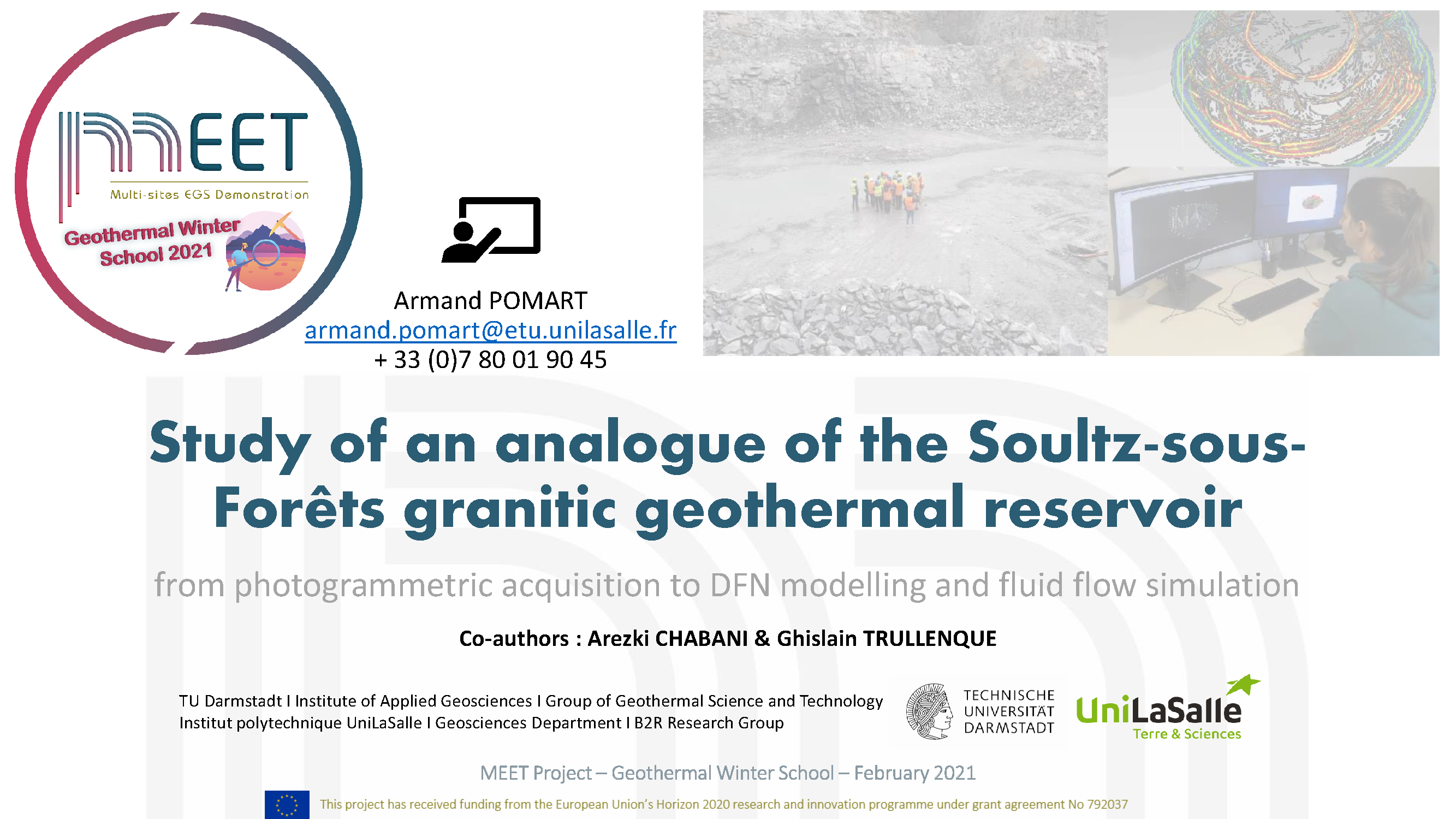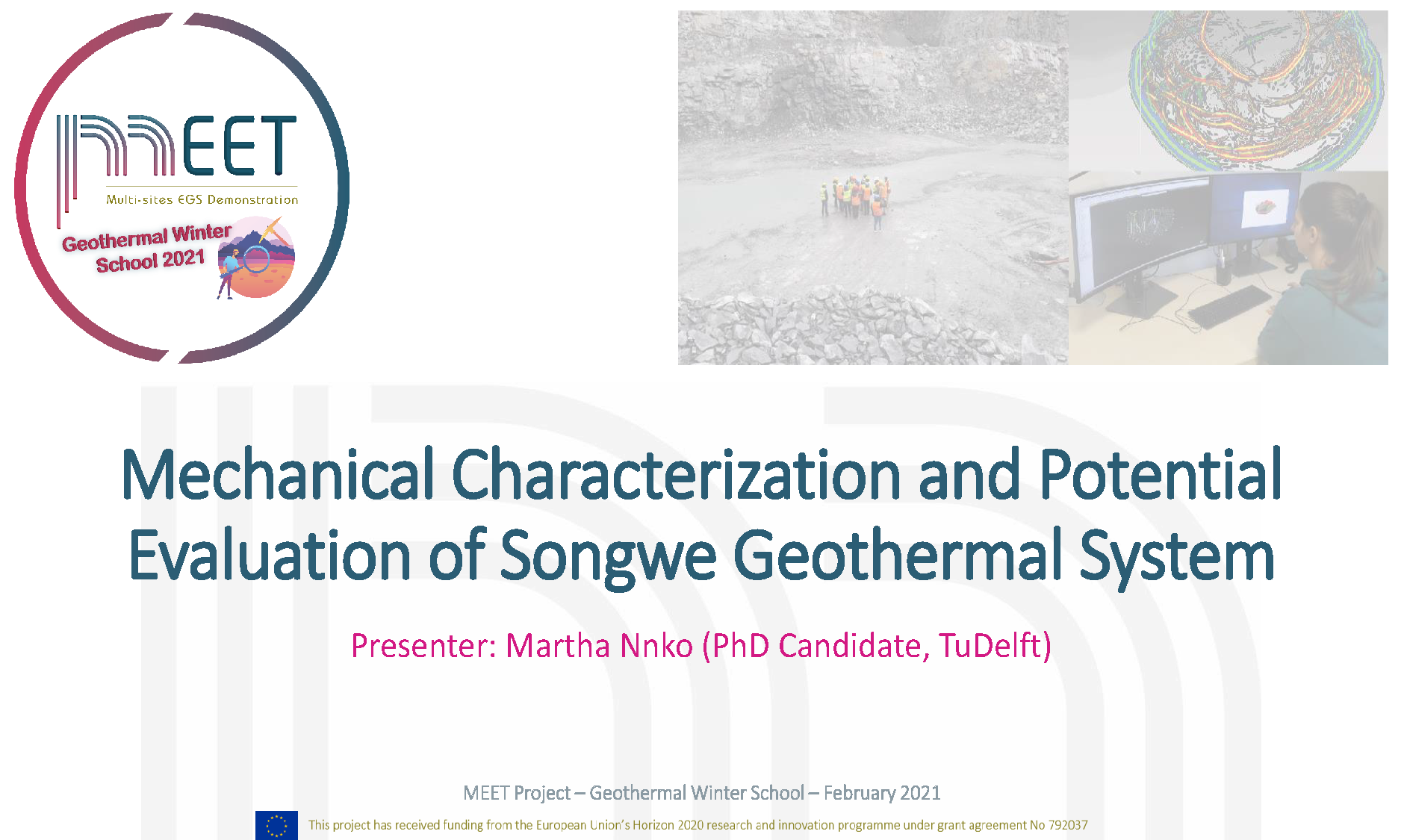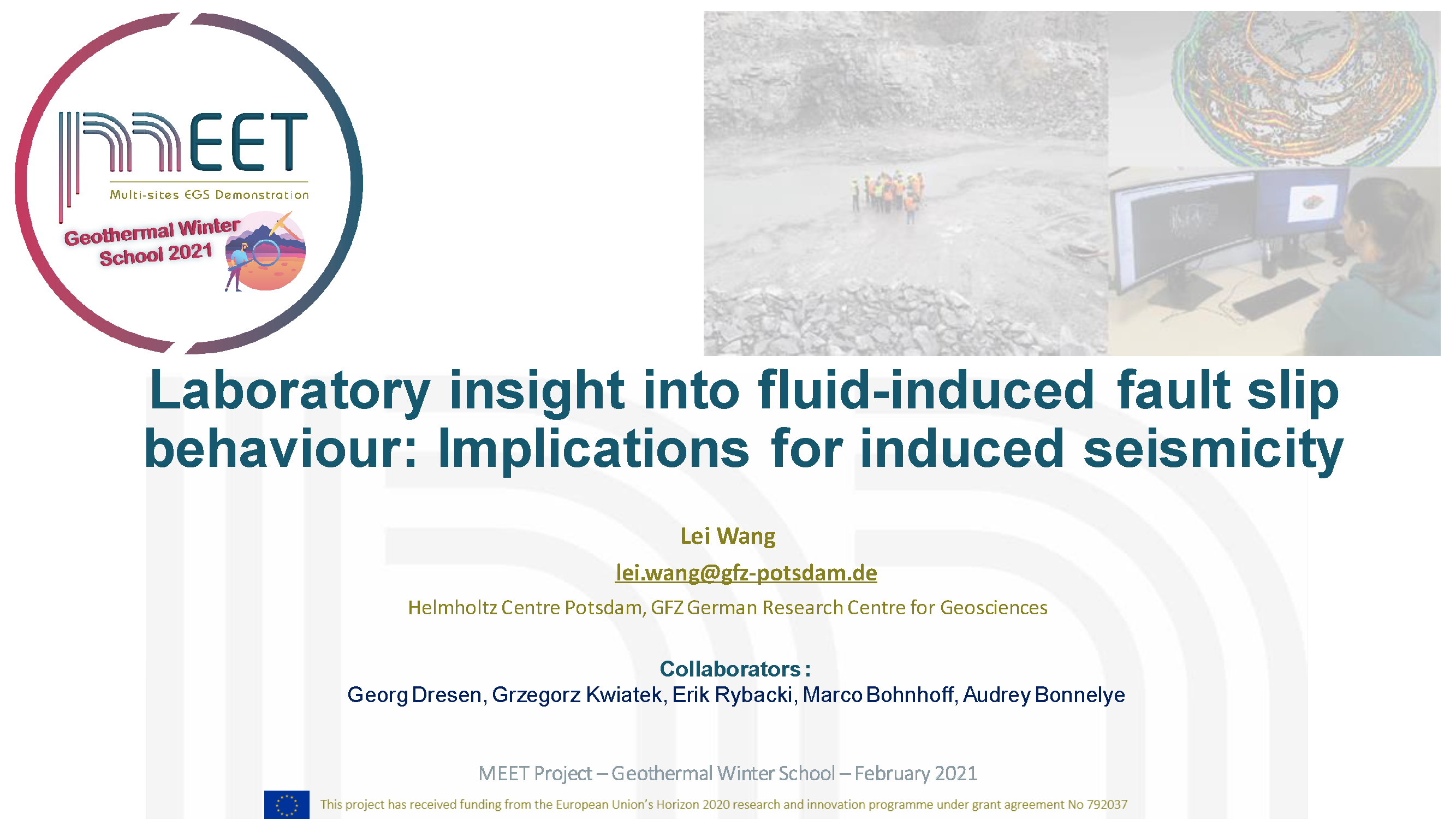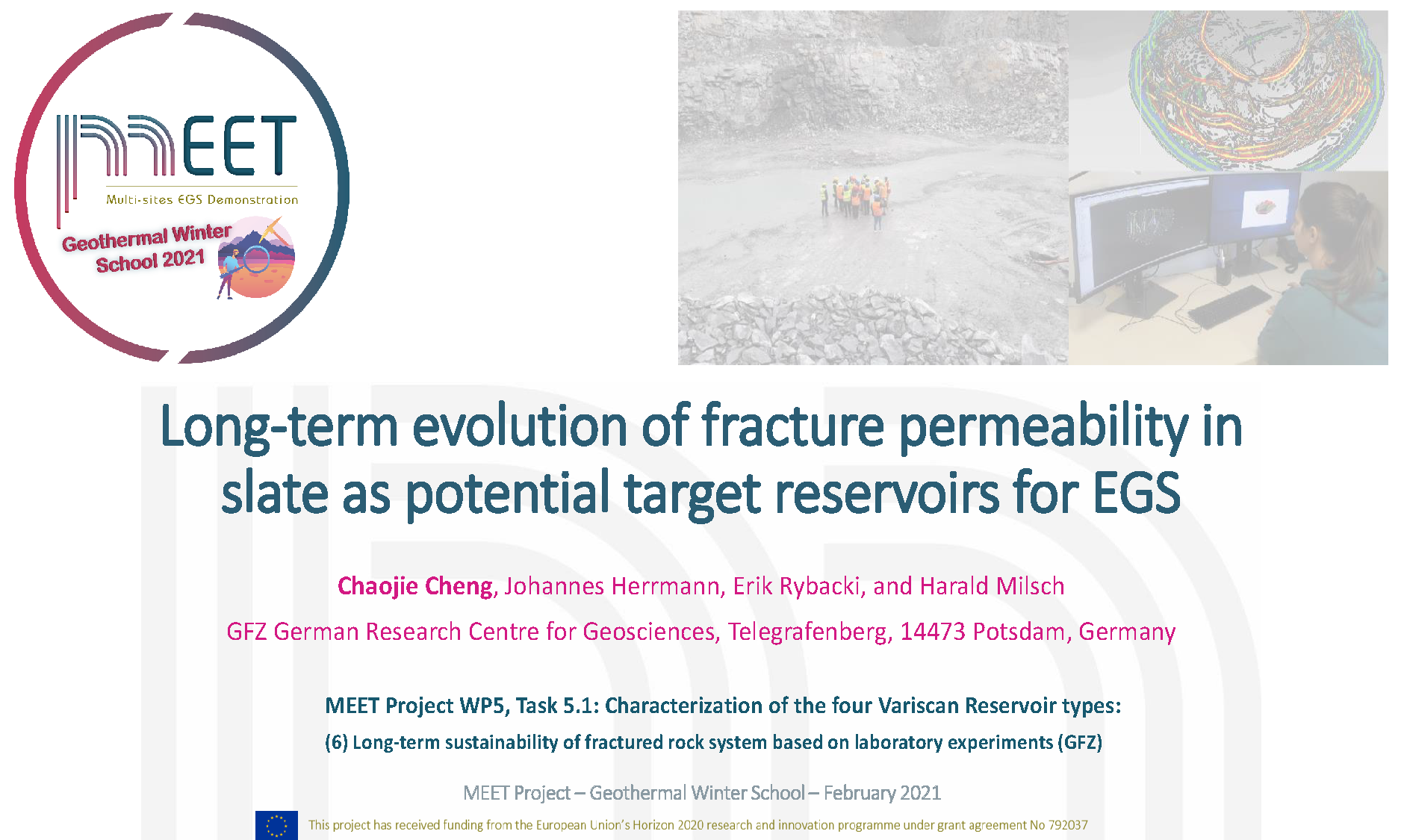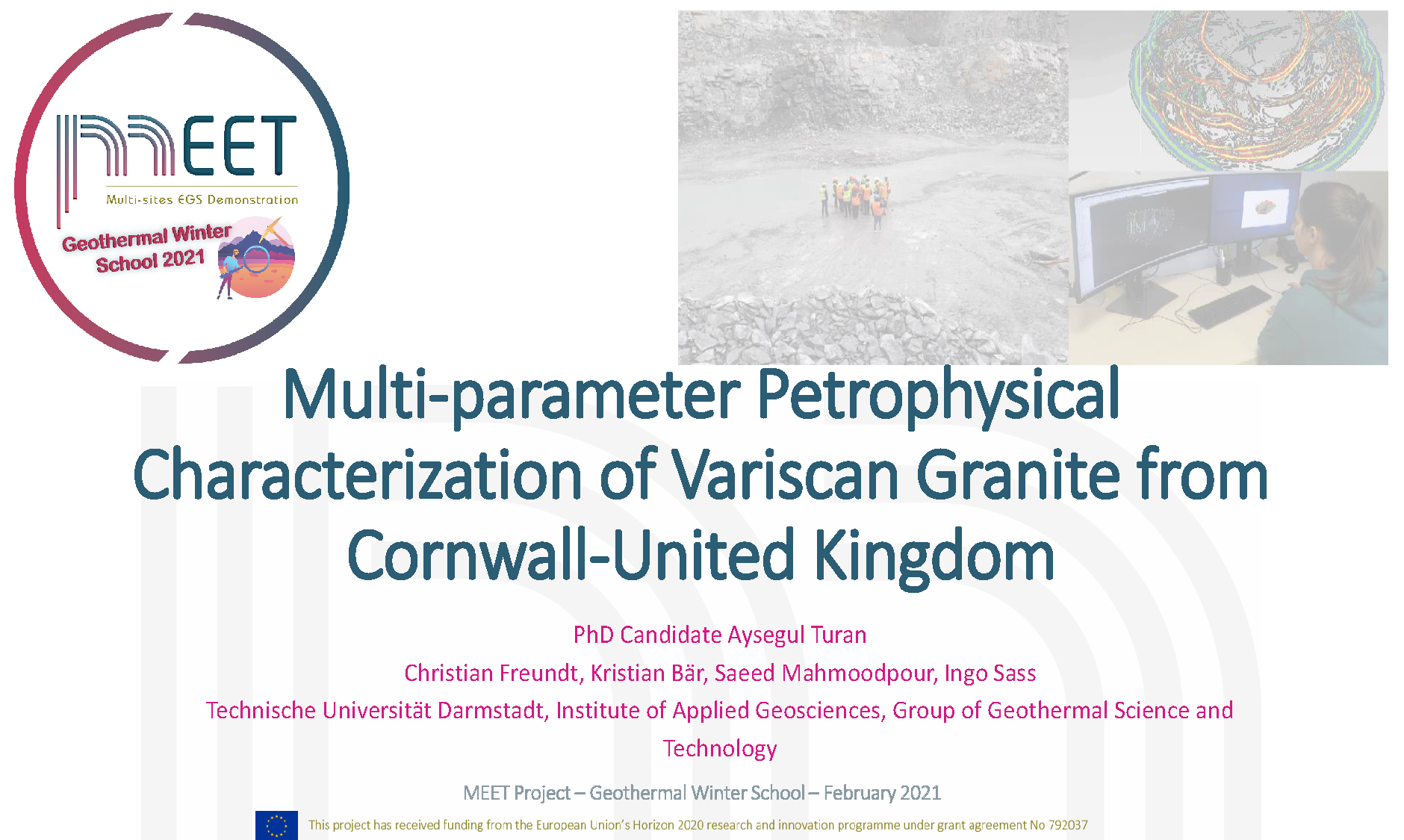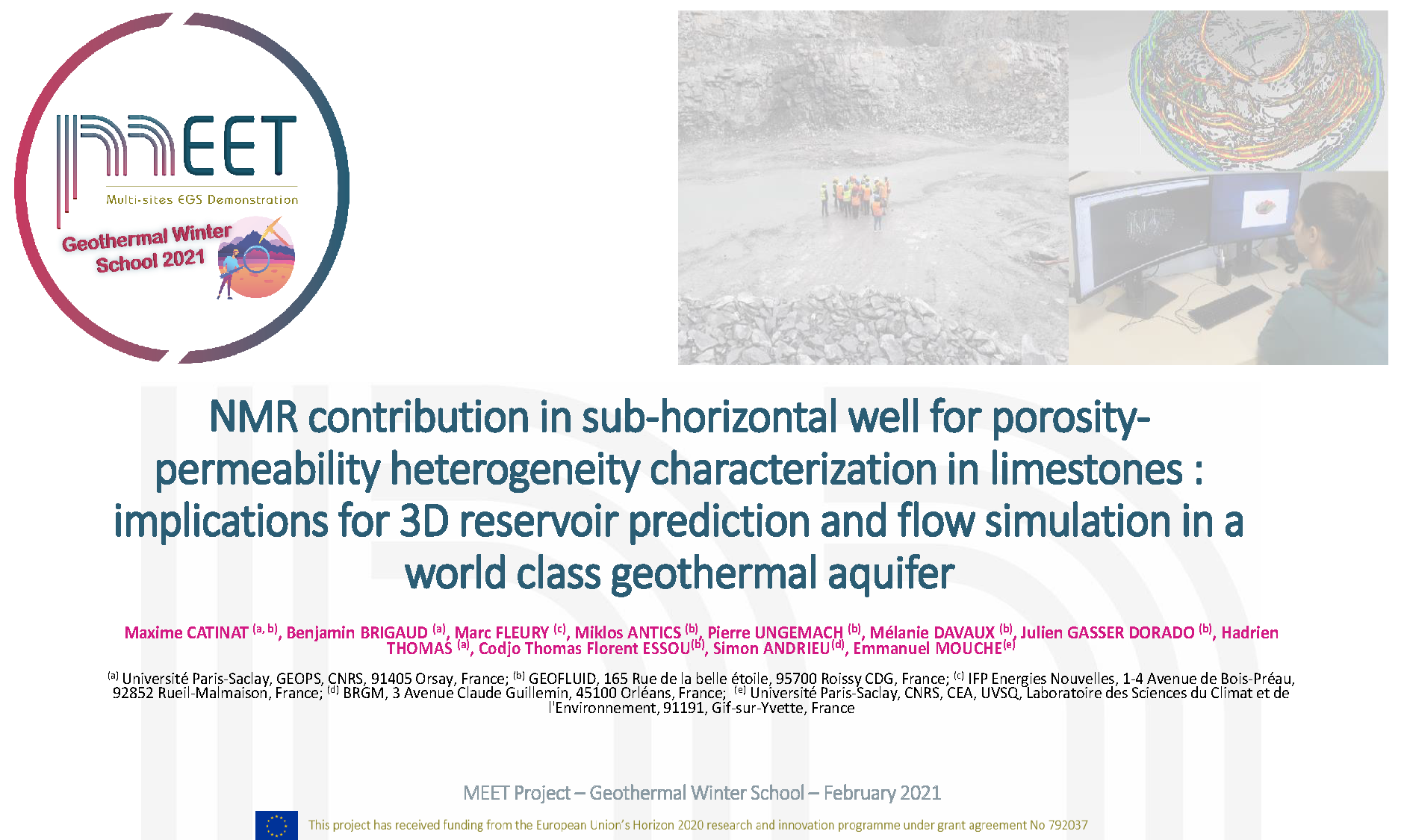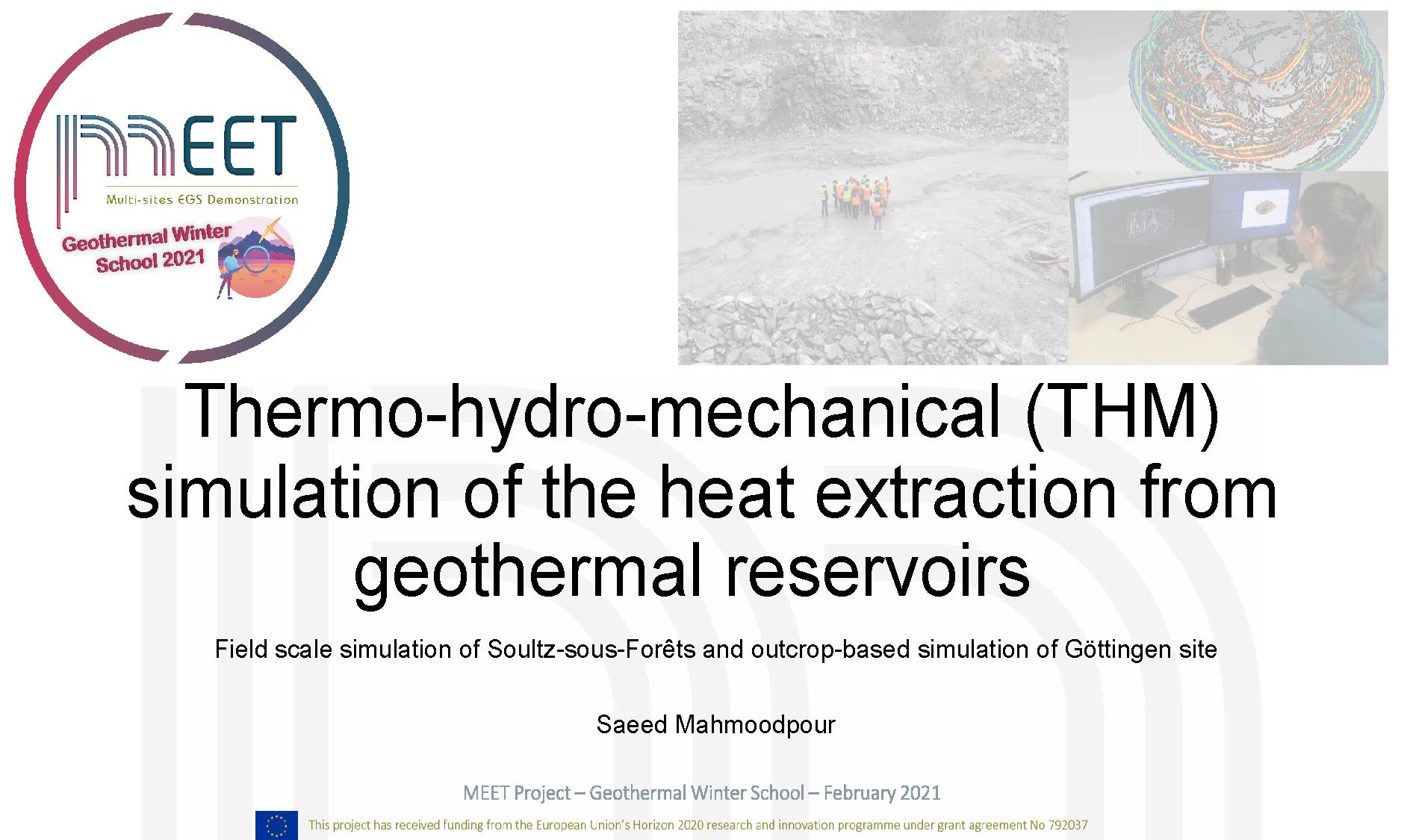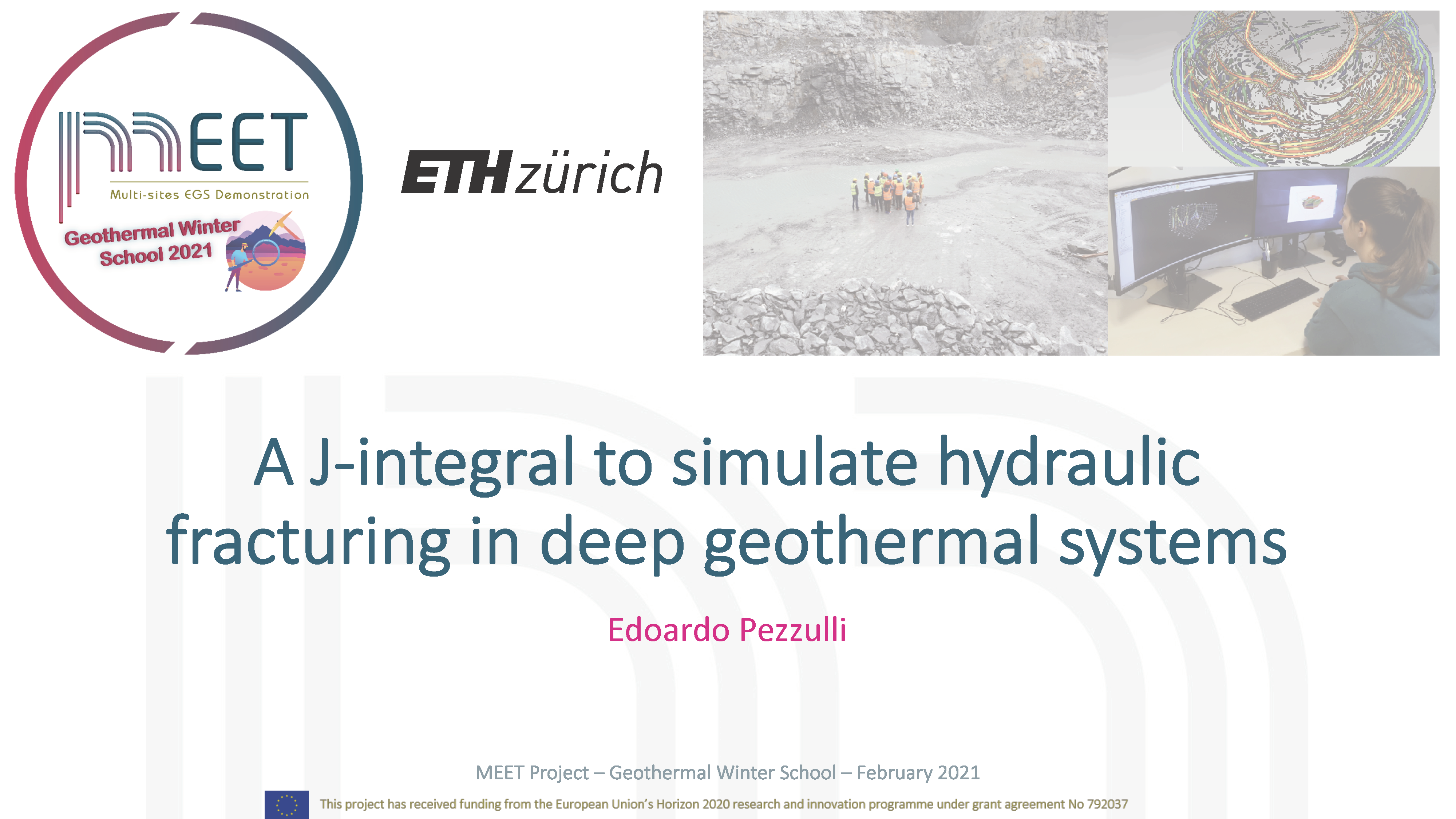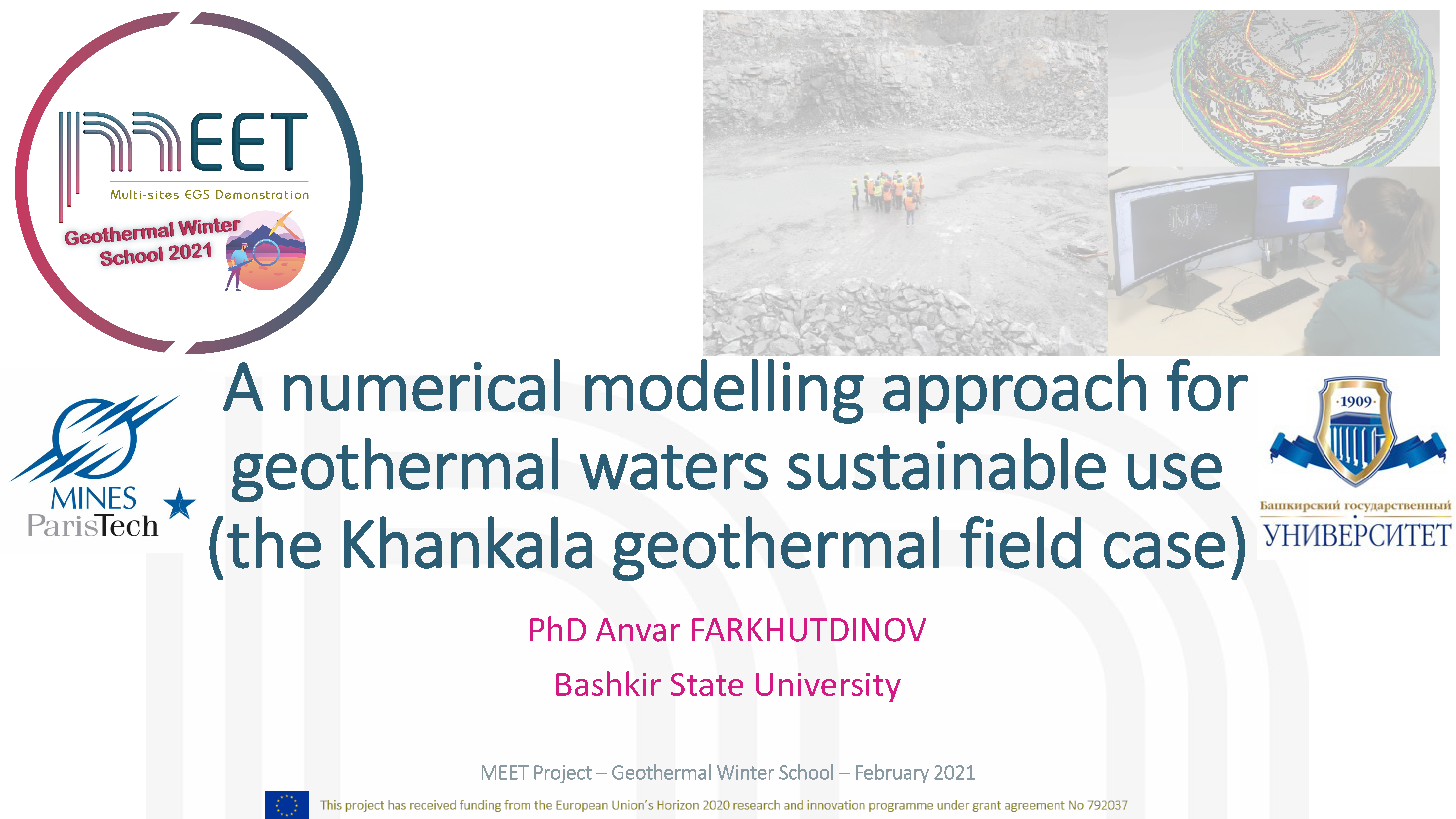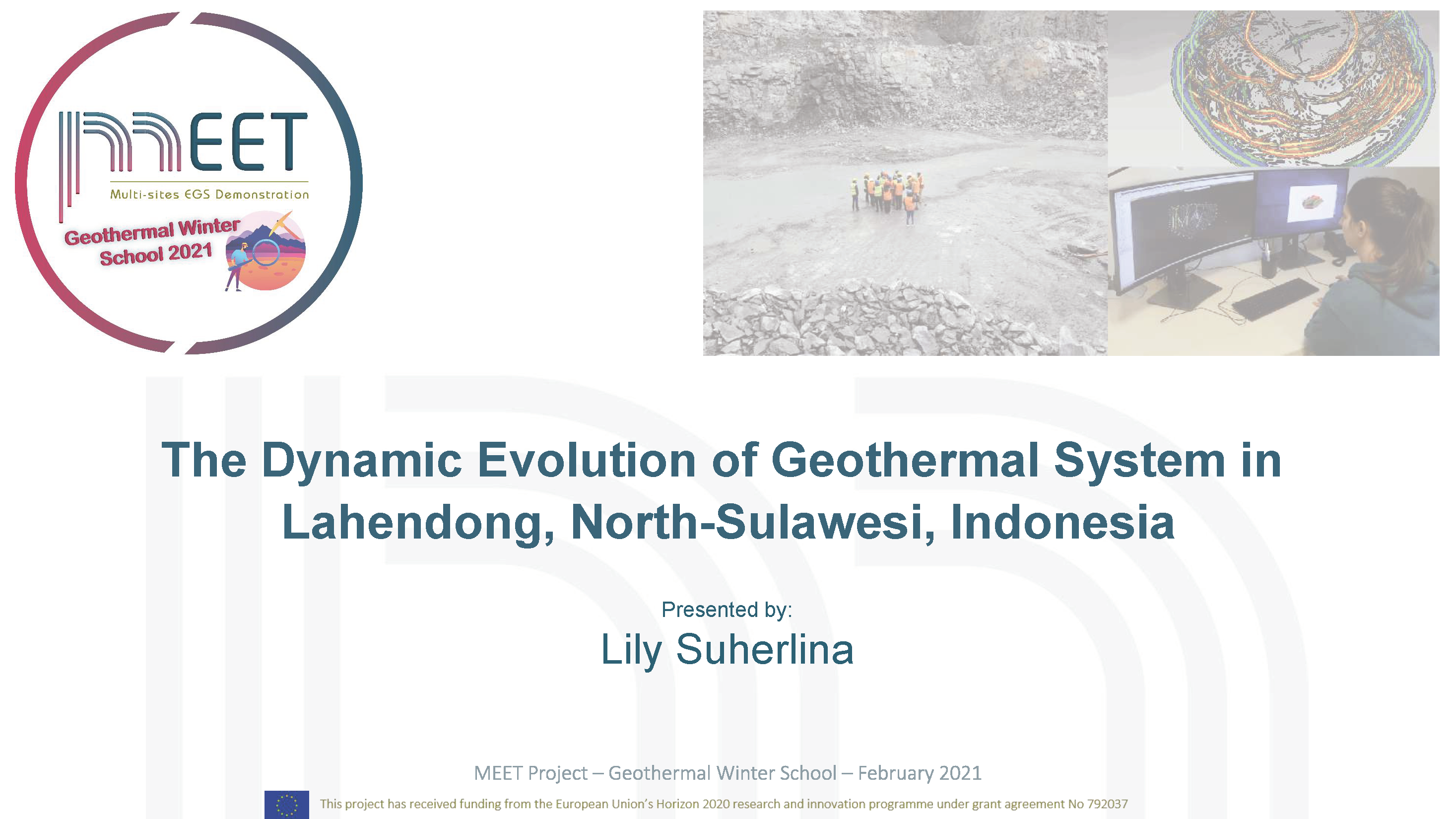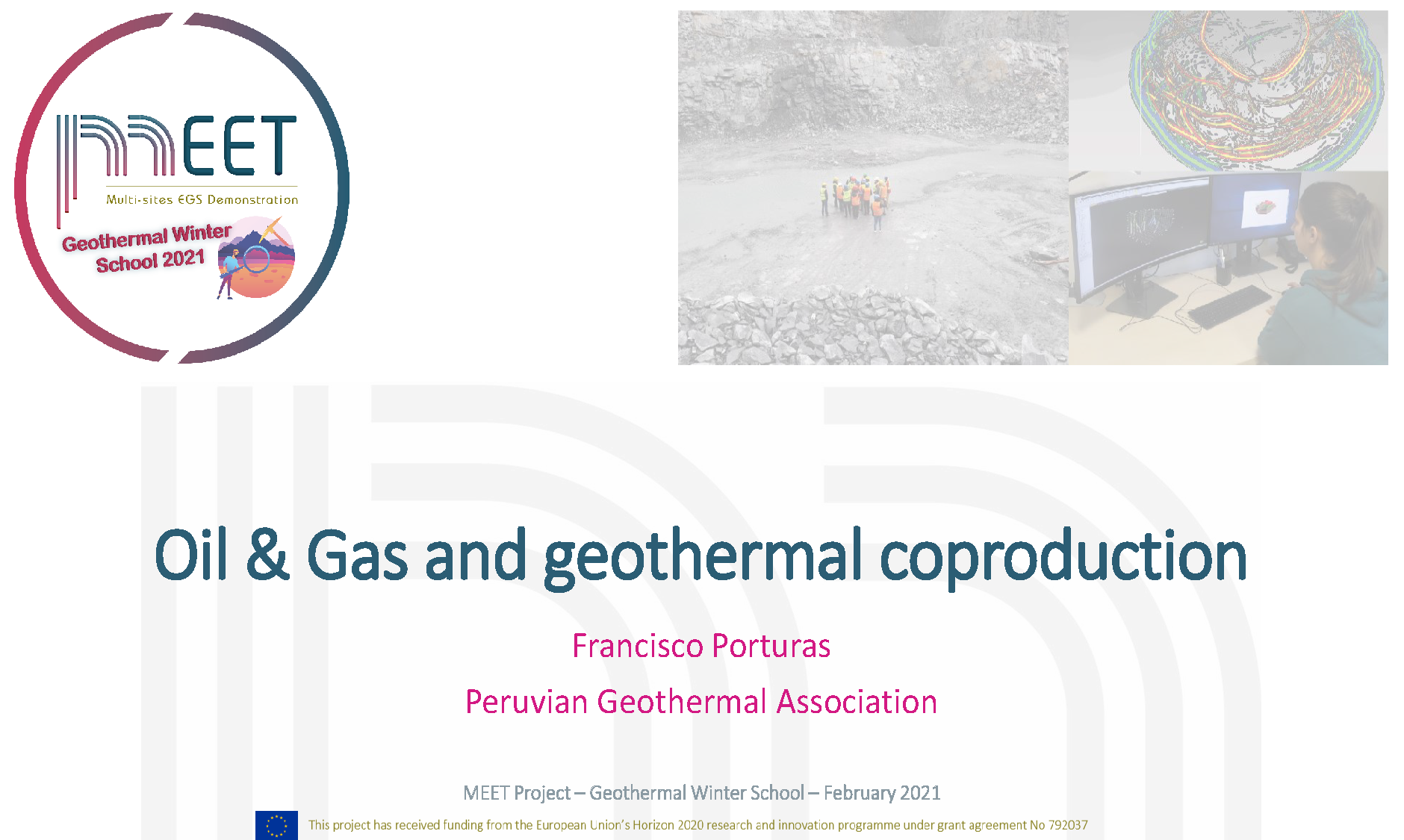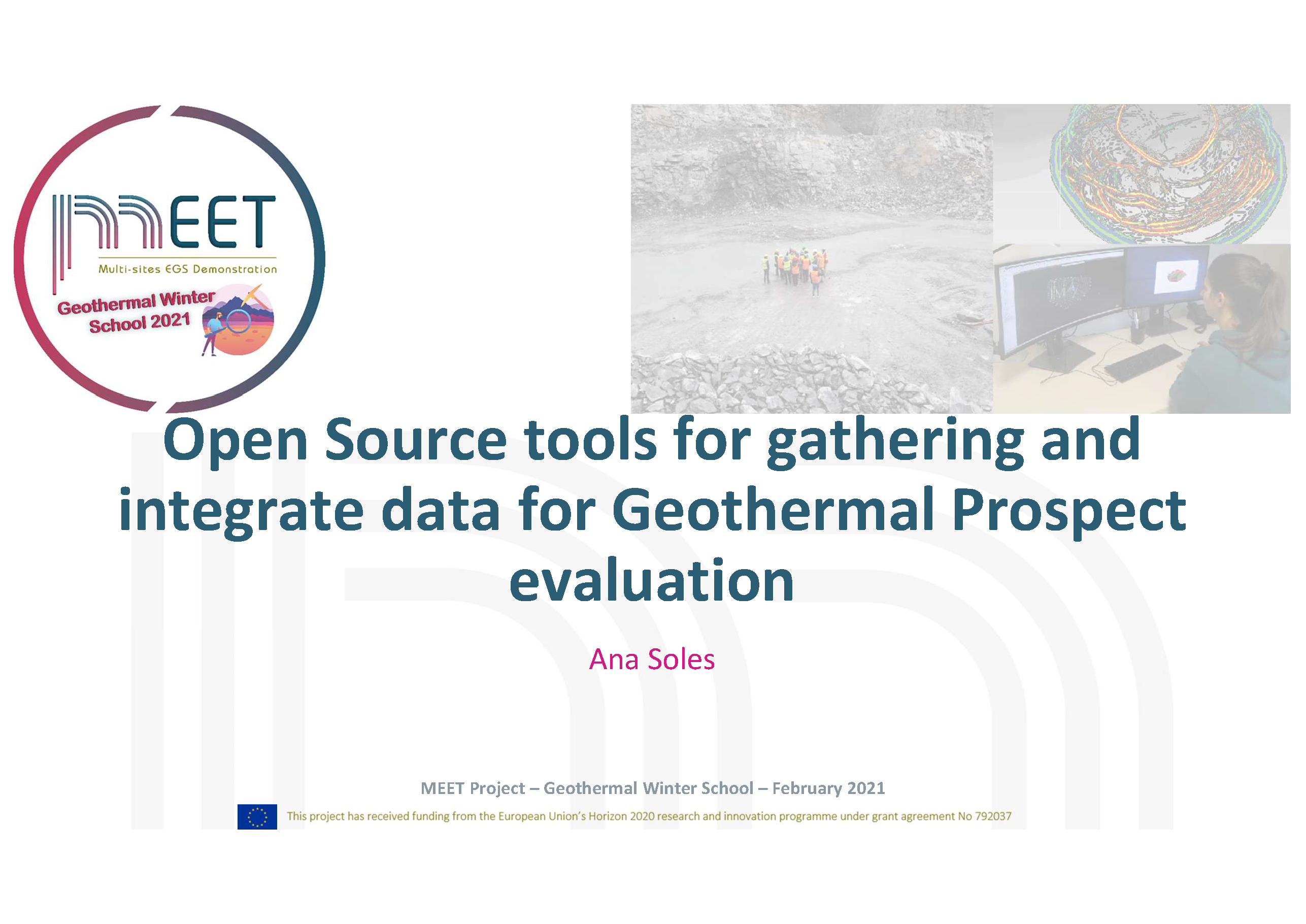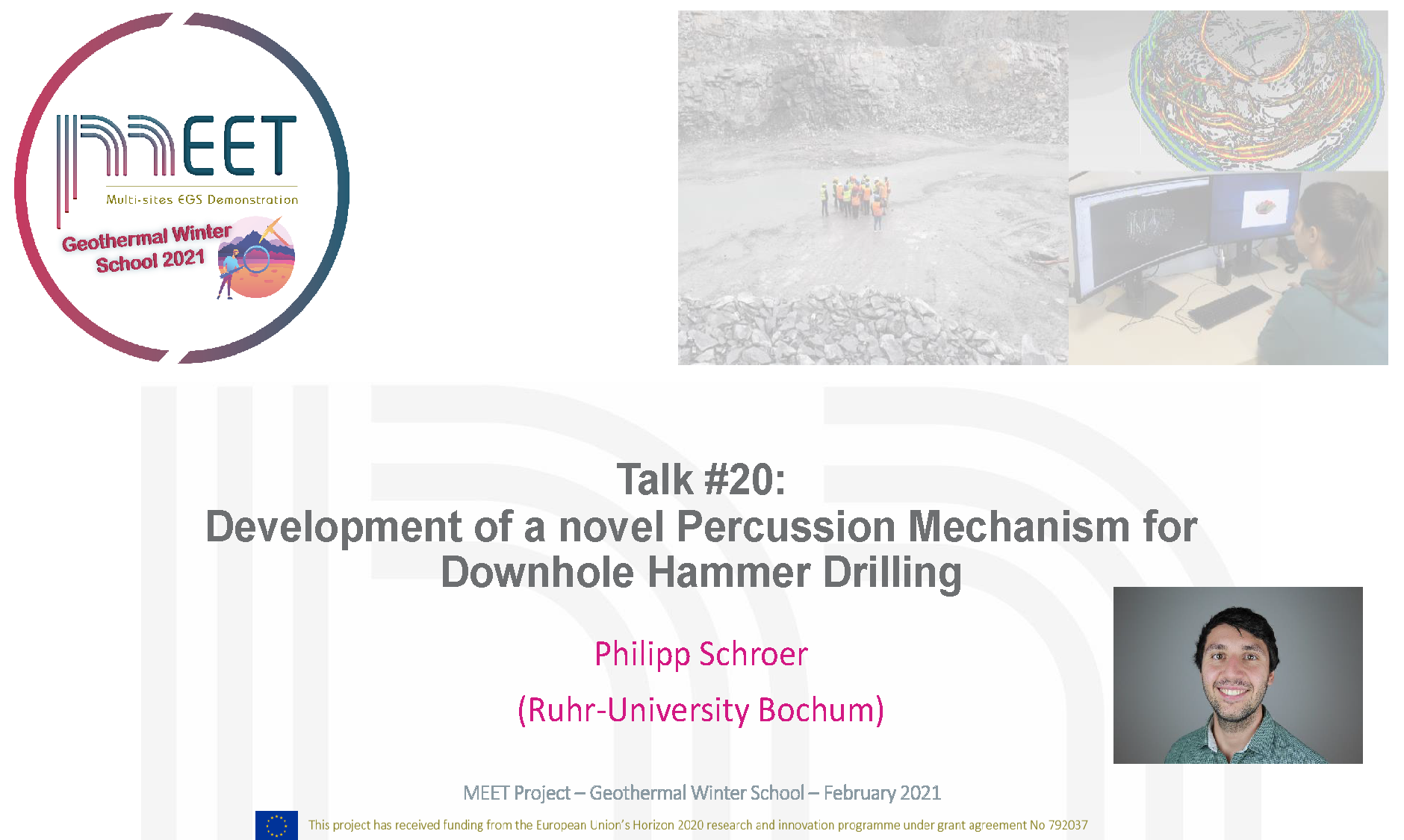The MEET educational program was held on 16-19th February 2021
Geothermal is decisive for the energy transition since it provides a flexible base load renewable source of energy. The contribution of geoscientists is central for the development of this form of renewable energy. We need to train today the next generation of Geoscientists in order to develop and exploit the geothermal projects of tomorrow.
Through the Geothermal Winter School, The MEET consortium provides to future geoscientists some practical feedbacks from research and industry in geothermal. Indeed, this educational program was intended to transfer new knowledge to European students on Enhanced Geothermal Systems (EGS) and demonstration sites, based on highly advanced research approach and industrial expertise from ongoing projects.
Master and PhD students from MEET partners and European universities, but also post-doctoral fellows and engineers, were invited to register and follow the lectures in order to acquire new knowledge on EGS. The registration was free.
The Geothermal Winter School was entirely broadcasted virtually given the current pandemic and it was host on PhDTalent web platform: https://app.phdtalent.fr/events/european-geothermal-phd-days-2021-meet-geothermal-winter-school-2021-2_962/details
Thanks to everyone’s involvement, the event was a great success that has exceeded our expectations. More than 160 people had registered and participated, represented by Master and PhD students, Post-doc fellows, subsurface engineers, senior scientists… This 3.5 days event had been the occasion to have 17 lectures, 1 public webinar, 3 thematic sessions and 1 session to promote the work of young researcher. In addition to that, 4 demosites have been presented and 3 virtual visits have been conducted during a common half day shared with European Geothermal PhD Days (EGPD).
We would like to acknowledge our Sponsors: CY Cergy Paris Université, CY Cergy Advanced studies and the International Geothermal Association. Without your support, this event would not have been so fluid and accessible. Thank you also to all speakers and chairpersons for this great event, of very high-standard training with intense discussions. Our final thanks go to the organizers of the MEET Winter School at CY Cergy Paris Université.

